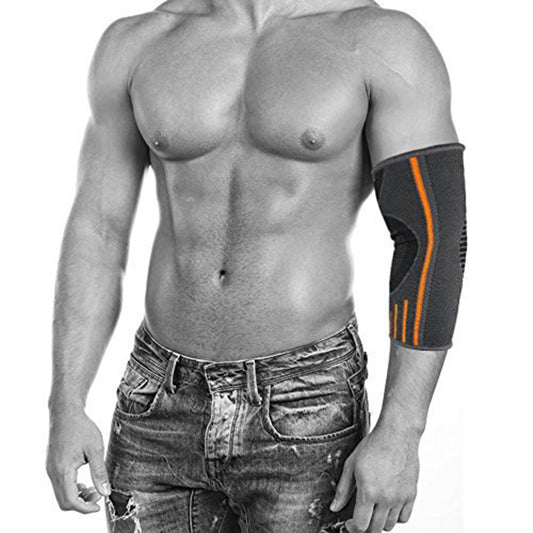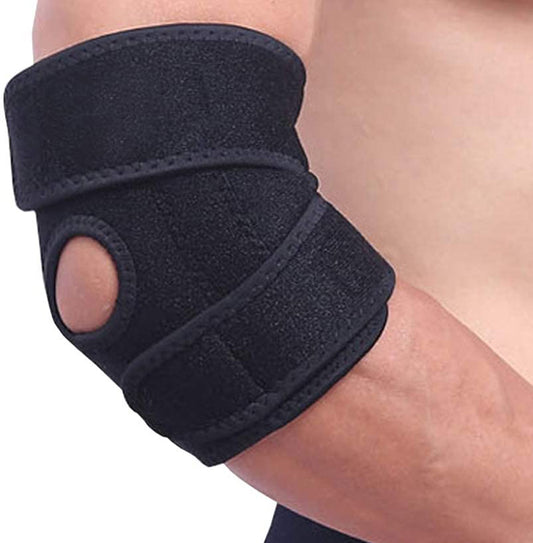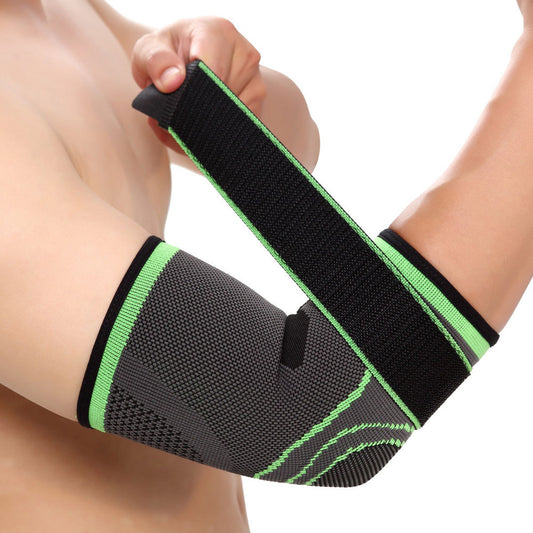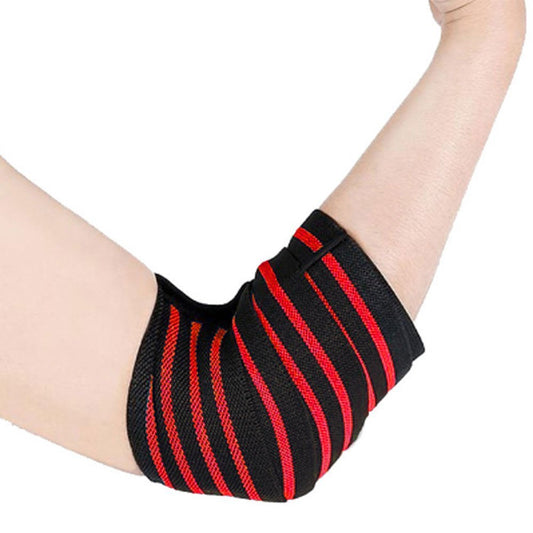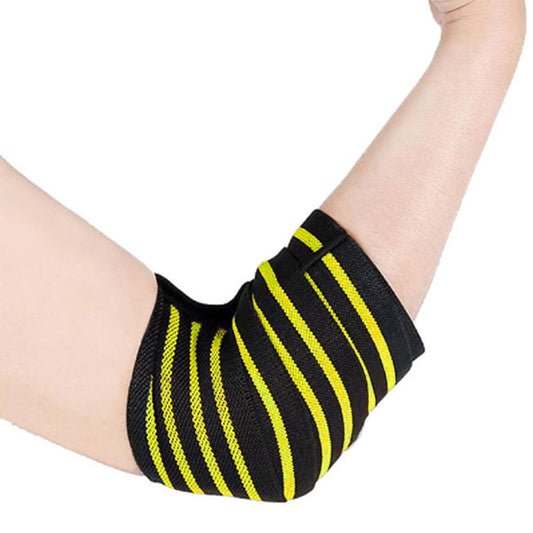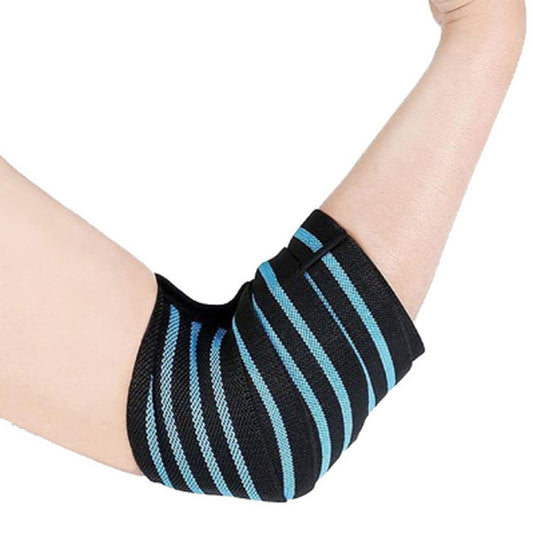-
Elbow Brace Compression Sleeve Elbow Support for Weightlifting- Joint Pain, Tendonitis, Arthritis, Arm Protection, Tennis and Golfer's Elbow - Pair
Regular price $15.99 USDRegular price$30.99 USDSale price $15.99 USDSale -
Adjustable Elbow Brace, Breathable Neoprene Elbow Support with Dual-Spring Stabilisers, Arm Wrap Elbow Strap for Tennis, Golfers, Protection Support
Regular price $13.99 USDRegular price$25.99 USDSale price $13.99 USDSale -
Elbow Support Brace (2 Pack), Adjustable Breathable Nylon Elastic Elbow Sleeve Brace Compression Wrap for Golf Tennis Sports Training Women Men, Elbow Pain Relief
Regular price $18.99 USDRegular price$18.99 USDSale price $18.99 USD -
ZSZBACE Elbow Compression Sleeves (1 Pair) - Support for Tendonitis Prevention & Recovery
Regular price $16.99 USDRegular price$16.99 USDSale price $16.99 USD -
Elbow Brace Strap for Tendonitis 2 Pack, Tennis Elbow Compression Sleeves, Golf Elbow Treatment
Regular price $16.99 USDRegular price$16.99 USDSale price $16.99 USD -
Elbow Brace for Weightlifting Compression, Comfortable and Adjustable Elbow Support for Tendonitis and Arthritis - Pair
Regular price $16.99 USDRegular price$16.99 USDSale price $16.99 USD
Collection: Elbow Support : Compression Sleeves and Braces for Tennis Elbow, Golfers Elbow, and More
Ultimate Elbow Support Collection
Elbow pain can be debilitating, affecting your daily activities and hobbies. Whether it's from tennis, golf, weightlifting, or repetitive work motions, the right elbow brace can make all the difference. At ZSZBACE, we offer a comprehensive collection of elbow supports designed for various needs and conditions. Discover how our braces can provide relief, support, and improved performance for everyone, from athletes to weekend warriors.
Why You Need an Elbow Brace
Understanding Tendonitis and Elbow Injuries
Elbow injuries are common, caused by overuse of tendons and ligaments, often leading to painful conditions like tendonitis and arthritis. These conditions can affect the dominant arm, whether you're playing tennis, golfing, or lifting weights. An elbow brace can alleviate discomfort, promote healing, and enhance performance by providing targeted support.
Key Symptoms That Indicate You Need an Elbow Support
- Persistent Pain: If you experience consistent elbow pain, especially during physical activities, an elbow brace can help manage the symptoms.
- Weakness in the Forearm: Weakness in the arm can indicate underlying tendon issues, which a support brace can help improve.
- Restricted Motion: Difficulty moving your arm or pain when trying to do so can signal the need for stabilizing support.
- Swelling and Tenderness: If your elbow feels tender or swollen, it may be time to consider an elbow brace for compression and relief.
Who Can Benefit from Our Elbow Braces?
Athletes and Fitness Enthusiasts
- Tennis and Golf Players: Gain added stabilization to protect against tennis elbow or golfer's elbow.
- Weightlifters: Protect joints and tendons during heavy lifting with compression sleeves designed for high performance.
Everyday Use
- Office Workers: Alleviate strain from repetitive typing and writing tasks.
- Manual Laborers: Reduce stress on the elbow from heavy lifting and repetitive tasks.
Health-conscious Individuals
- Chronic Pain Sufferers: Find relief from conditions like arthritis and tendonitis.
What Makes ZSZBACE Elbow Braces Special?
Our Manufacturing Excellence
ZSZBACE is synonymous with quality and expertise in elbow support solutions. With years of manufacturing experience, we ensure that our products stand out in:
- Material Quality: Made with breathable neoprene for comfort and flexibility.
- Adjustability: Our braces are adjustable, making them suitable for a wide range of elbow sizes.
- Innovative Features: Dual-spring stabilizers for enhanced support, ideal for high-impact sports like tennis and golf.
Range of Products
Our collection includes:
- Adjustable Elbow Brace with Dual-Spring Stabilisers: Provides enhanced stability and protection for both tennis and golfers.
- Elbow Brace Compression Sleeve for Tendonitis and Arthritis: Ideal for joint pain and tendon protection during weightlifting.
- Comfortable and Adjustable Elbow Support: Specially designed for tendonitis and arthritis sufferers to ensure comfort and adjustability.

Common Questions About Our Elbow Braces
How Does the Elbow Brace Work?
Our elbow braces apply gentle pressure and support to the elbow joint, reducing stress and distributing pressure evenly across the area. This approach helps relieve pain and prevent further injuries.
Are These Braces Suitable for Chronic Conditions?
Yes, our braces are designed to aid in conditions like chronic tendonitis and arthritis by providing consistent support and reducing fatigue in affected areas.
How to Properly Use an Elbow Brace?
- Correct Positioning: Align the support pad over the affected tendons.
- Secure Fit: Adjust the brace to a snug, but comfortable fit.
- Wear Duration: Can be worn throughout daily activities but remove during periods of rest for optimal recovery.
Preventing Future Elbow Injuries
Tips for Long-Term Elbow Health
- Exercise Regularly: Strengthen shoulder and arm muscles to reduce the load on the elbow.
- Rest and Recovery: Allow sufficient rest between activities to prevent overuse.
- Proper Technique: Use proper sport techniques to minimize stress on the elbows.
By incorporating these tips along with using our elbow supports, you can maintain a healthy lifestyle without sacrificing your favorite activities.

Supporting your lifestyle with the optimal elbow brace from ZSZBACE means choosing quality, experience, and care in one package. Experience relief, enhanced performance, and prevention like never before. Explore our product links and start your journey to better elbow health today!

